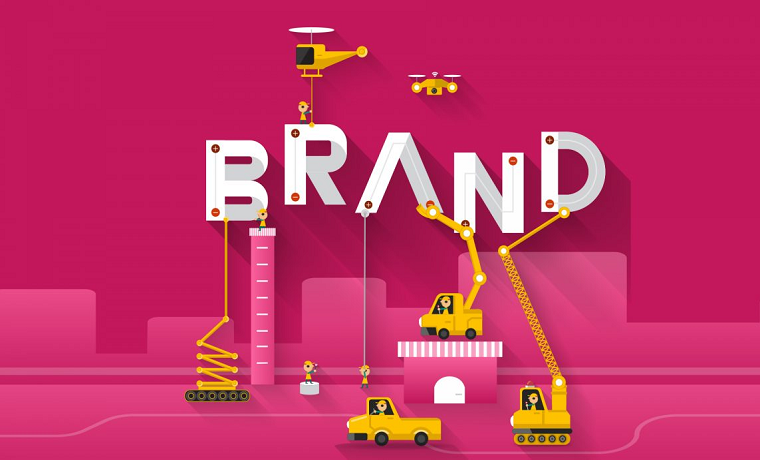In today’s digitalized era, people remember businesses through the power of branding. At times, the catchy logo sticks in their mind, while sometimes, people recall your brand through customer experiences. These elements portray the company’s image to its customer, building your brand’s identity. It makes your business recognizable to people and determines how they will perceive your brand. After all, the customers associate the brand identity with products, services, design, logo, etc.
Therefore, every business should focus on developing a robust identity. It doesn’t matter if you are opening a startup or want to change your brand’s persona, use different elements to build your brand’s identity. Before jumping to the tangible aspects, understand your business inside out. Learn about its mission, vision, and personality to clarify who you are as a brand. After this, invest your resources in designing the visual component of brand identities such as logos, colors, and themes.
If you don’t know how to design a brand identity, have a look below. Here are eight elements of developing your brand identity.

1. Design an Attractive Logo
Undeniably, the logo is central to your brand identity design. It is a piece of art that will make people remember your brand. Hence, you have to design a logo that matches, elevates, and complements your brand. Additionally, the logo has to align with other brand identity elements such as emotional appeal, theme, and aesthetics. You might want to use free software to create a logo but for an outstanding design, bring a graphic designer on board.
If your company operates in New South Wales, look for graphic designer to get services from the most reputable design company. You will have experts guiding you about which designs will best resonate with your brand, providing various options. However, avoid making the logo fancy or complex. You can seek inspiration from Coca-Cola, Google, or Disney and design a straightforward logo. After all, the simpler the logo, the easier it is to scale between different mediums.
2. Choose An Attractive Color Palette
Have you heard of color psychology? Well, it plays a massive role in designing brand identity. You can use different color schemes to express your brand’s identity and emotions. Usually, the blue color represents calm, while yellow and red are for demonstrating energy and passion. You can also adjust the shades of colors to reflect your brand message. For instance, if you own a financial institute, add a darker shade of blue to the logo since it conveys trust. That’s the reason why many banks have a shade of blue in their color schemes. Most importantly, only add a few primary colors in the logo to make it look visually appealing.
3. Invest in Professional Typography
Believe it or not, fonts are powerful. Therefore, you have to pick a single primary typeface to lead the brand design. Simultaneously, you have to ensure the font works in harmony with your logo and color palette. Here are some tips to help you select the best typography.
- Avoid mixing two different fonts since it doesn’t look aesthetic.
- Do you like trendy fonts? While they look pleasing, they are short-lived. If you want your brand to improve and thrive in the years to come, avoid following the fickle fashion.
- Avoid using default fonts from the layouts. They might be readable but won’t help your brand stand out. Hence, consider setting a different typeface to ensure your brand looks different.
4. Add Visual Elements
You might think logo design is the only visual representation of a brand, but there is more to it. All the small details and visual graphics can build up your brand identity. So, why not convert conventional text-based information into visual concepts? For starters, you can create mascots – the custom design characters to represent your brand symbolically. To many people, this seems unnecessary, but they establish a connection with users.
Moreover, you can add pictures, videos, and infographics to your webpage and social media forums. You will have to follow the same brand theme across every graphic element to make sure it is consistent with your brand. In addition to educating the audience, it boosts engagement rates because people interact with visuals more than text.
5. Invest in Corporate Brand Style
Once your logo and graphics are ready, combine them into a harmonic corporate style. You can brand all the items together to create a consistent brand identity. Here are some of the branded items you can use to create an excellent brand identity.
- Business Card: Although people use Google My Business to look for contact details, having a business card is essential. It represents the brand and reflects professionalism.
- Billboards and Banners: If you have a budget, work on outdoor and web banners creatively.
- Branded Merchandise: Clothes and stationery with brand logo bring team spirit into the company. At the same time, promotional items are great for branding and creating awareness.
6. Pick Catchy Taglines
As audiences’ attention spans have shortened, brands have to pick a catchy tagline that captures attention within seconds. In addition to attracting customers, a good tagline sets you apart from companies providing similar products. Similarly, it can also build potential value over time. When you use the same slogan for a long time, it becomes a memorable brand identity. What reminds you of ‘finger lickin good?’ KFC, of course. Such catchy taglines make audiences remember your brand. However, make sure to keep it short and concise; otherwise, people will have difficulty recalling it.
7. Align Packaging with Brand’s Theme
Unsurprisingly, product packaging is key to attracting customers and a potential touchpoint. You can conduct some style research before starting the design process to ensure it aligns with the brand’s theme. You can seek inspiration from market leaders within your niche or create a Pinterest board. But keep in mind that you are curating design ideas for the ideal customer. Hence, think about what will appeal to your audiences. Once you have chosen the design and shape, look into the content that goes on the packaging. If you are selling food or beverages, mention all the ingredients and calories on the packaging.
8. Be Consistent
Having a unified brand message goes a long way. It gives you an edge over competitors and encourages people to buy and engage with your brand. After all, marketing is more persuasive and credible when the brand message is consistent. Here are three tips to ensure consistency while designing your brand’s identity.
- Tone and Voice: You have to maintain the same tone and voice across all channels. If you follow a fun and friendly approach, use it across social media, website, and billboards.
- Fonts: Sometimes, brands have primary and secondary fonts that they use for different mediums. Much like the tone and voice, having uniformity in fonts will improve the brand’s recognizability.
- Color Palette: If you have used blue and red colors in your logo, make sure to add the same colors to all your visual content.
- Use a Brand Style Guide: You can create a brand style guide to define brand elements and branding rules to keep everyone on the same page. You can also include your company’s mission, vision, imagery styles, and other information to ensure the team maintains consistency.
Final Thoughts
Starting a business with a confident brand and a unified identity will bring more clarity to the operations. You will get a clear idea of who your target audience is and how to capture their attention. At the same time, designing a brand identity can make it easier for people to recall your brand. Logos, taglines, and packaging remain in customers’ minds; hence, bringing them back to your business. Lastly, having a robust brand identity can upscale your brand presence in the digital world.

